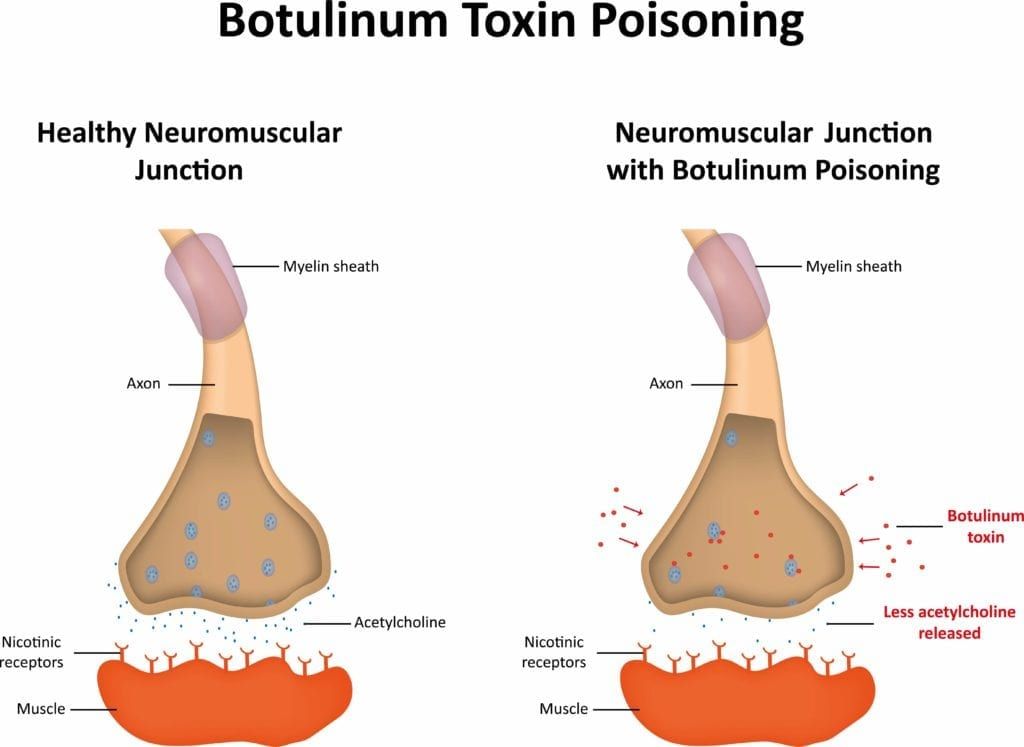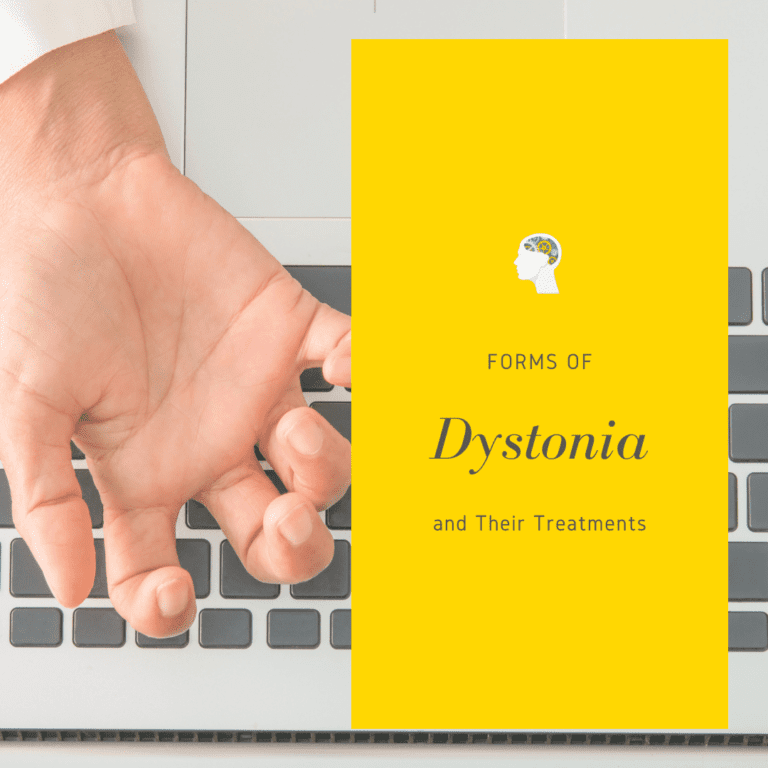Dystonia is a neurological movement disorder that causes muscles to contract involuntarily. This can result in abnormal posture, twisting and repetitive movements, or difficulty speaking or swallowing. Dystonia can affect any part of the body, but it most commonly affects the neck, arms, and legs. There are three main types of dystonia: primary dystonia, focal dystonia, and generalized dystonia. Each type has its own unique symptoms and characteristics. In this blog post, we will discuss each type of dystonia in detail.
Ways to Characterize Dystonia
The term dystonia describes a group of movement disorders, however each disorder is different depending on its characterization. There are a few different ways to characterize dystonia.
Location
For starters, dystonia can be classified by the areas it affects:
- Focal: affects an isolated body part
- Segmental: affects adjacent body areas
- Multifocal: affects two or more noncontiguous areas
- Generalized: affects the trunk and two other body regions
- Hemidystonia: affects one entire side of the body
Temporal Patterns
Dystonia can also be characterized by its temporal patterns:
- Persistent: dystonia persists all day without fluctuation
- Task-specific: dystonia only occurs during a specific action
- Diurnal fluctuations: the severity of dystonia fluctuates at certain times of the day and gets better at night
- Paroxysmal: temporary dystonia occurs as a sudden episode as a result of a specific trigger
Movement Disorders
Dystonia can also be characterized by the presence or absence of a co-occurring movement disorder.
- Isolated dystonia: with the exception of tremor, dystonia is the only motor feature
- Combined dystonia: another movement disorder, such as Parkinsonism, is present along with dystonia
Etiology Axis
This classification is based on the presence or absence of degenerative changes or structural damage in the nervous system. It also pertains to whether the form of dystonia was inherited or acquired, as well as its underlying cause.
Unfortunately, the various ways that dystonia is classified can cause some confusion. For example, cervical dystonia can be classified as both focal and task-specific. The same goes for writer’s cramp—it is often considered to be a type of occupational dystonia or task-specific focal hand dystonia. Although the terms used to describe these forms of dystonia may not always agree, they all refer to the same disorder.
Forms of Dystonia
Focal Dystonias
Focal dystonia can affect the mouth, eyes, hands, neck, vocal cords, and feet. Most cases are primary, meaning that they are genetically inherited, however there are known secondary cases. Here are some examples of focal dystonia:
- Blepharospasm: involuntary muscle contractions in the eyelids and eyebrows that can either cause frequent blinking or a forced closure of the eyelids.
- Cervical Dystonia: excessive muscle contractions in the neck that cause the head, neck, and shoulders to contort in awkward positions. Cervical (neck) dystonia can be classified as anterocollis, laterocollis, torticollis and retrocollis, depending on how the neck is contorted.
- Laryngeal Dystonia: involuntary muscle contractions of the vocal cords that cause speech interruptions. Also known as spasmodic dysphonia or adult-onset focal dystonia.
- Oromandibular Dystonia: forceful contractions of the face, jaw, and/or tongue that interfere with chewing and speaking. Also sometimes referred to as cranial dystonia or Meige’s syndrome (when it occurs with blepharospasm). Can be primary or secondary.
- Writer’s Cramp: involuntary muscle contractions in the fingers, hand, forearm, and sometimes shoulder. Also known as hand dystonia. Can either be focal or part of generalized dystonia.

Secondary Dystonias
Secondary dystonias are acquired, meaning that they develop later in life as a result of another condition or injury. The most common cause is a traumatic brain injury or stroke, however there are other possible causes such as birth trauma and infections. Secondary dystonia can also be caused by the use of certain medications. Here are some examples:
- Drug-induced Dystonia: certain antipsychotic medications can cause intermittent spasmodic or sustained involuntary muscle contractions in one or more body parts.
- Neurological and Metabolic Diseases: dystonia can be a symptom of various neurological or metabolic diseases. Some common ones include Huntington’s, Parkinson’s, or multiple sclerosis.
- Toxins: toxins can damage the basal ganglia, which can cause dystonia. However, this is generally only seen in individuals who have other neurological problems.
- Trauma: trauma to the brain and/or a specific body part can lead to dystonia. For example, blepharospasm can develop after an eye injury or surgery, and cervical dystonia can occur after whiplash or other neck injury.
Other Types of Dystonia
- Dopa-responsive Dystonia
- Functional Dystonia
- Generalized Dystonia
- Lower Limb Dystonia
- Myoclonus Dystonia
- Paroxysmal Dystonia and Dyskinesia
- Pediatric Dystonia
- Rapid-onset Dystonia-parkinsonism
- X-linked Dystonia-parkinsonism
Treating Dystonia
Treating dystonia is difficult because there are many different forms and causes. For example, the treatment for primary forms of dystonia would be different than treatment for secondary forms of dystonia. Some treatments are also more effective for certain forms of dystonia than others.

Medications
The most common medications for treating dystonia are anticholinergics, which block the neurotransmitter acetylcholine, however these may not be effective in some cases. Benzodiazepines, anti-parkinsonism drugs, anticonvulsants, and baclofen can also be used to treat dystonia. Around one-third of individuals with dystonia find that medications are effective.
Botulinum Toxin Injections
There are also botulinum toxin treatments that can be injected into the affected muscles to temporarily reduce spasms and other symptoms of dystonia. This is a common treatment for focal dystonias, such as writer’s cramp and cervical dystonia. There are different botulinum toxins available such as Botox, Xeomin, Myobloc, and Dysport.
In Conclusion
Dystonia is a neurological disorder that causes involuntary muscle contractions and can result in abnormal postures. There are many different forms of dystonia, each with their own unique symptoms. The form of dystonia can directly influence the form of treatment, especially since some treatments work better for certain forms than others. Medication and/or botulinum toxin injections can both be used to treat dystonia, however botulinum toxin injections are usually recommended when dystonia is located in one area.

Dr. Kashouty, a diplomate of the American Board of Psychiatry and Neurology (ABPN), practices general neurology with fellowship trained specialization in clinical neurophysiology. Dr. Kashouty finds the form and function of the nerves and muscles the most interesting part of neurology, which is what led him to specialize in neurophysiology with more emphasis on neuromuscular conditions. He treats all neurological diseases, but his main focus is to treat and manage headaches, movement disorders and neuromuscular diseases.




